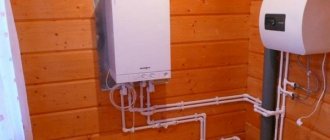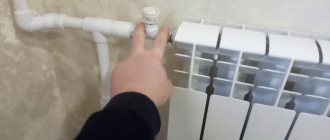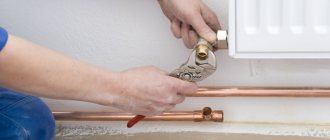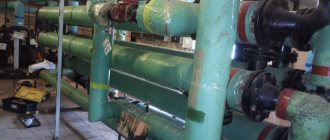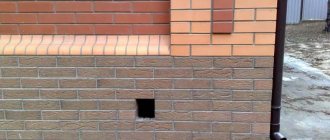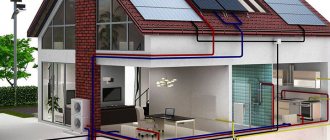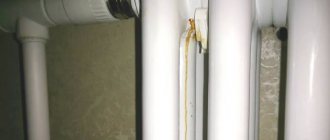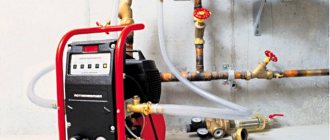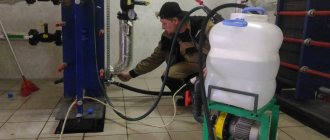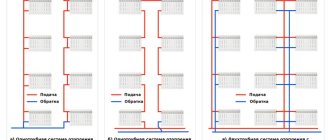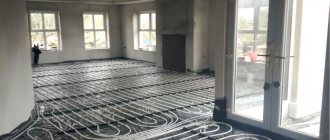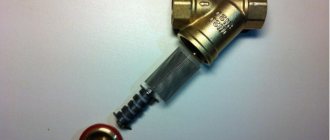It is impossible to imagine a modern, comfortable home without an efficient heating system. Often, many private houses are not connected to centralized heating and the homeowner must independently resolve issues related to installing a heating boiler, installing heating radiators and connecting the entire system with subsequent maintenance of equipment. This work must be carried out by professional specialists, which will guarantee the efficiency and trouble-free operation of heating in the house. Our specialized service department “Complex of Ideas” offers its clients comprehensive services for maintenance, repair and installation of heating systems in a private or country house.
Free consultation
Range of procedures
Heating maintenance and repair consists of the following activities:
- elimination of leaks that occur in pipelines, devices and shut-off or control valves;
- replacement of damaged sections of devices and taps;
- elimination of “reverse slopes” appearing on pipelines;
- installation of air-bleeding valves in areas where it is impossible to level out reverse slopes or air plugs;
- elimination of breakdowns that occur in the control unit or boiler heating system;
- testing and, if necessary, replacement of failed measuring and control instruments;
Maintenance of the heating system of a private home includes preventive work on various elements, including washing and painting. The heating system is flushed and adjusted every year at the end of the season.
Heating unit maintenance
The procedure for servicing thermal units is described in the passport documentation attached to them. There is, however, a general list of maintenance work aimed at extending the life of the boiler and maintaining efficiency at a high level.
In gas boilers, the burner is cleaned, maintenance and adjustment of the elements for preparing the gas-air mixture are carried out. Filters are cleaned and connections are checked for leaks. It is mandatory to simulate operation and check the tightness of the shut-off valve.
The second point is inspection and maintenance of the combustion chamber, which is true for boilers with any type of combustible fuel. The heat exchanger, air and draft sensors are cleaned of burning and deposits. The enclosing structures of the fire zone are subjected to cleaning only at the special request of the manufacturer, but in general, this only contributes to the acceleration of corrosion and burning.
In double-circuit boilers with a serviced boiler, the additional heat exchanger may require descaling. You should also carefully observe the surfaces of the internal chimney channels of pyrolysis boilers (not the entire chimney) and the blades of smoke exhausters, checking them for reduced capacity or tightness.
It is possible and even advisable to entrust boiler maintenance work to a certified specialist; this is often what the maintenance rules for most units require. Such cooperation will make it possible to quickly restore operation in the event of emergency failures and carry out major repairs of boiler room equipment at a reasonable price. A special employee will also help fine-tune the system for analyzing the composition of exhaust gases.
Heating overhaul
Major heating repairs include re-lining pipelines, replacing or troubleshooting heating devices. Finally, tests may be required to identify faults and subsequently debug water heaters, pumps, control units and boilers.
Regardless of whether a major or normal repair was carried out, at the end of the work it is necessary to accept the corrected system. It begins with analysis and testing for compliance with established rules. Immediately before the start of the event, an estimate for the repair of the heating system is approved.
This document takes into account the cost of materials and devices that are required to return the system to operation. The estimate is prepared by specialized specialists according to certain standards.
The procedure for conducting thermal imaging
The process of inspecting the heating system using a thermal imager is carried out along all circuits and rooms. After each measurement, the data is saved and recorded, and so on for each room. The obtained temperature parameters are recorded separately:
- heating boiler;
- radiators;
- convectors;
- warm floor.
All of these heating elements have different heat output and therefore may heat up differently if they have a separate circuit. After receiving all the data, the electrical laboratory analyzes the measurements.
System test
Hydraulic testing of the system is performed upon completion of flushing and, as a rule, confirms the successful repair of heating systems. Such tests should only be carried out during warm months. First, all shut-off valves are opened: this equally applies to the valves that are located on the air collectors. Then a special hydraulic press is connected to the heating system - it supplies water.
Filling the system with water must occur slowly, otherwise air will remain there. When liquid appears in the air collector valves, they must be closed. Next, the hydraulic press releases the specified pressure, which should be 1.25 times greater than the working pressure. After 5 minutes, the indicators are checked: the pressure should not drop by more than 0.02 MPa.
If everything went well, and tests showed that there is no need for repairs, the heating system is preserved and put back into operation in the house only at the beginning of the next season. Preservation consists of filling pipelines and other areas with clean working fluid, which is taken from the heating network.
Survey results
Measurement results
After the electrical measuring laboratory receives the measurement data, a conclusion is made on the efficiency or defects of the measured heating system. Problem areas are noted and recommendations for eliminating them are provided in written or electronic form. After all identified defects have been eliminated, the heating system should be put into operation and observed for 3-5 days of effective operation.
Particular attention should be paid to rooms where defects in the operation of the heating system have been identified and corrected.
Inspecting heating systems using a thermal imager is an effective and correct solution that will help identify problems at minimal cost. The conclusion of an accredited ETL based on the results of the inspection has legal force and can be presented in court or other authorities in cases of litigation with an unscrupulous developer, seller or other person responsible for detected problems.
The electrical laboratory accepts applications for thermographic diagnostics of residential, public, industrial and electrical facilities. You can place an order for specialists to visit you, as well as agree on the technical details of the inspection through any communication channel published on the “Contacts” page.
Before the start of the season
Before the start of the season, it is necessary to regulate the system according to a certain algorithm. First, the valves at the heating system inlet are opened. Then water from the heating network is supplied to the pipelines - this happens with all equipment intended for heating.
When there is water inside the pipes, experts examine the lines for heating the lower sections of the risers. If any of the system elements gets very hot, the taps are closed. The main objective of the measures is to create the same temperature conditions for all risers operating within a particular system.
Following the risers, uniform heating must be ensured for heating equipment on each floor of the house. As in the previous case, taps in very hot areas are covered. The required temperature is controlled in the central section of the device section, which is furthest from the riser.
The study of the system is considered successful if the temperature conditions in the premises deviate from the specified value by 1-2 degrees. Otherwise, you need to carry out troubleshooting work.
When starting a system after a long period of inactivity, it may take a couple of days to a week to balance.
Determination of design thermal loads
The heat load is determined either from the contract with the heat supply organization, or directly from the design of the building or heating point.
In the absence of such data, the calculated load of hot water supply can be determined by the consumption in liters per day of hot water with a temperature of 65 ° C per person or one worker.
The hot water supply load is characterized by unevenness coefficients, which are the ratio of the maximum load to the average for certain periods.
You can find out everything about the inspection and calculation of thermal loads here.
Energy audit of the heating system • Consultation • 8(499)490-60-60
Types of faults
Thus, faults are divided into two types: faults in the wiring (radiators and fittings), which can be repaired with your own hands, and faults in the boiler room and equipment, which can only be fixed by specialists. The range of main heating problems in a private home that users can fix on their own:
- batteries do not heat well or do not heat up at all;
- pressure surges and drops;
- the balance is broken: hot return and cold supply;
- there is no circulation.
Batteries don't get hot
Very often, batteries in the heating system, both in a private house and in an apartment, may not heat due to the accumulation of air in them. Using air vents, you need to check for the presence of gas: air will come out of the vents noisily. If water comes out of them, then the problem is not in the air - most likely, but in the closed radiator tap.
The third option is a trashed radiator. It is necessary to shut off all the other batteries in the branch so that the flow of water goes to the faulty one: if it gets hot, then the problem is not clogged. In this case, hydraulic leveling of the branch will be required by covering other batteries. It may take more than one day to level out.
Pressure drop
Pressure surges and drops are often observed during startup: the system needs to operate for several days. The dissolved air gradually comes out, so you will have to recharge the circuit.
When the system has been operating for more than a month, it is worth rechecking the dimensions of the expansion tank - if they are small, then a pressure surge occurs, the safety valve is activated and the pressure decreases. You just need to replace the tank. If everything is in order with this, then the problem is a leak in the system and you need to look for a leaking area.
Imbalance
In the case of hot return - which, in principle, is a rare phenomenon - the reason is the installation of a pump without a check valve or a pump for the “warm floor” system. When the pump starts, it initially works at full power and can “knock down” the circulation in the heating system of the house. When the space warms up, the problem will go away. If this does not happen, then it is worth checking whether the return and supply pipes are mixed up.
Lack of circulation
The first reason is the accumulation of air in the batteries, which needs to be released. Then the taps are checked, which may be closed due to inattention. Finally, the third step is to clean the filter in front of the boiler and in other areas where they are present. These factors are the source of the problem in 90% of cases.
If suddenly it doesn’t give a result, then there is only one option left - air locks in the pipes. The issue can be resolved by draining the water from the battery behind the loop - the water flow will expel the air from there. In the future, it is worth installing air vents on large hinges. If such measures do not help, then you need to contact specialists.
Advantages of using a thermal imager for diagnostics
The advantages of thermal imaging over other methods of equipment inspection are difficult to overestimate:
- no shutdown of the systems being tested and no additional preparation of the workplace are required;
- quick turnaround time for obtaining diagnostic results;
- high accuracy of the obtained data;
- the ability to identify the thermal contour itself and problem areas in it in places inaccessible to other methods (for example, under a concrete screed);
- the essence of the technique is non-destructive testing, i.e., there is no need to unscrew or disconnect anything;
- high level of work safety.
Construction of an installation without a project
Repairing a heating system is often more difficult than building a new home from the very beginning. Therefore, if you decide to make changes, it is worth making a project. Moreover, the house and the need for heat could have changed significantly over the years - the walls were insulated, the windows were replaced, and so on. Carrying out calculations and re-adjusting the boiler and radiators can bring significant savings - at the investment stage, if we do not buy an unreasonably large boiler and radiators, and during operation, since an incorrectly selected boiler will operate with less efficiency.
In addition, there are many elements in the system, the parameters of which must be selected by a specialist based on calculations; sometimes it turns out that switching two radiators in the same room helps to balance them hydraulically, without significant damping of flows using valves.
And such intensive damping means, for example, a higher load on the circulation pump, higher energy consumption and unpleasant squeaks and noise from the system.
Bad polypropylene pipes
Often the consumer (customer) believes that polypropylene pipes are absolutely reliable and cannot cause heating problems or cold radiators.
We recommend: How to make a balcony in a private house: types of structures, description, design, beautiful ideas
But polypropylene is much more insidious than old steel or metal-plastic pipelines. Each place of soldering (welding) is a potential increased resistance in the system or a cause of cessation of circulation (weakened movement of water through the batteries), due to deposits of material inside.
It is impossible to control the quality of connections from the outside; all that remains is to cut out pieces, resolder, and remake polypropylene pipes.
Poor performance of a polypropylene system is a real problem for the home installer. Good professionals don’t take on this material at all.
Improper ventilation of the boiler room
The method of ventilation depends on the type of combustion chamber. Heaters with an open combustion chamber require gravity ventilation, and the fresh air grille supplying air to the room must have a cross-sectional area of at least 200 cm2.
Of course, it is also necessary to have a vertical ventilation duct of at least 14 14 cm in size or 15 cm in diameter (which also gives a cross-sectional area of about 200 cm2), with an inlet opening near the ceiling.
If the combustion chamber is closed (the boiler takes air from outside, not from the room), then the regulations do not determine what type of ventilation is required. However, this is necessary, if only because in the event of a gas leak in the system, there is a danger of its accumulation.
